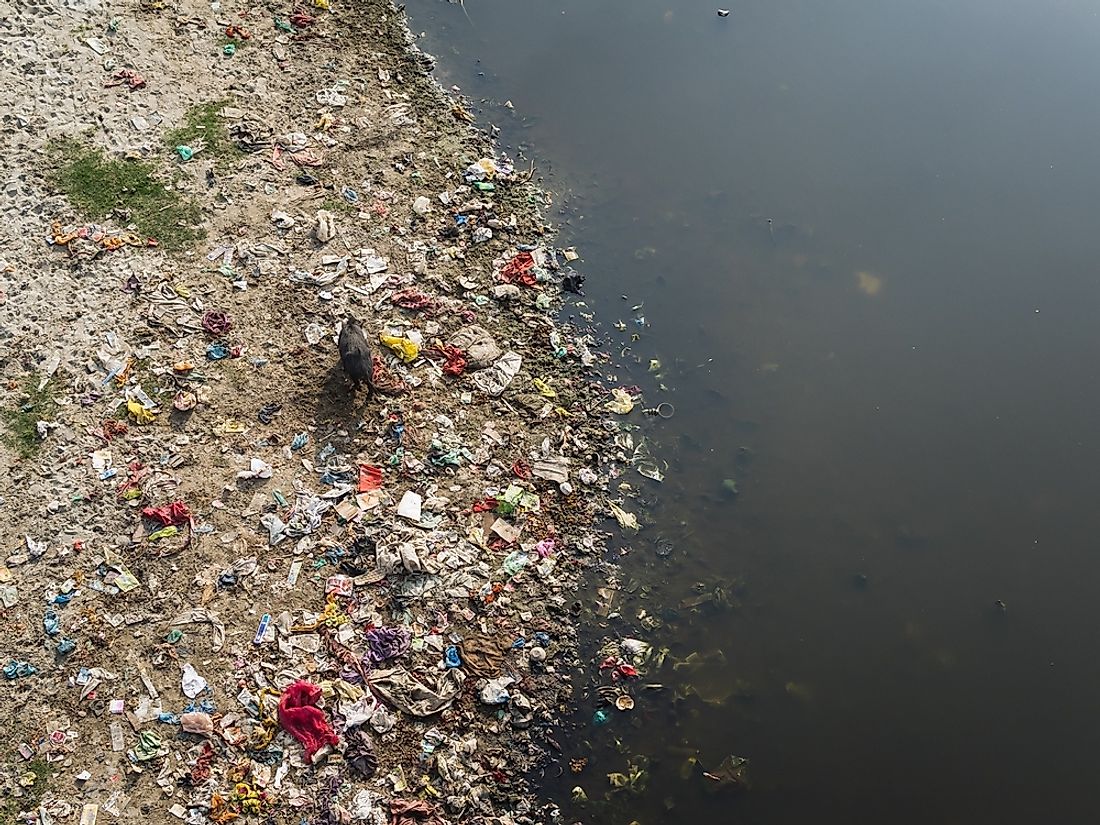The Most Polluted River In The World: The Citarum River

Indonesia is home to the most polluted river in the world, the Citarum River. It trails behind Bengawan Solo and Brantas as the third-largest river in Java Island. What was once a pristine water body is today filled with industrial and household waste, making it one of the world’s most polluted rivers. Floating and visible in the water are plastics, packaging bags, raw sewage, and other junks which render the river’s water invisible.
5. Description
The Citarum River has its source in Mount Wayang and its mouth in the Java Sea in Java. It flows for 190 miles from the Bandung Regency to the Karawang Regency in West Java. The residents of West Java rely on the river for activities such as agriculture, fishing, water supply for homes and industries, and electricity generation. Three hydroelectric power stations are operational along the river’s length, and they generate electricity for the Greater Jakarta and Bandung regions. The dams also supply irrigation water to rice paddies. The Jatiluhur Dam has Indonesia’s largest reservoir at 3 billion cubic meter storage capacity.
4. Historical Role and Current Pollution Problems
In prehistoric times, the river facilitated the growth of the Buni clay pottery-making culture. Archaeological sites, stone inscriptions, as well as Chinese sources have suggested that the civilization thrived in Citarum’s estuaries and valley in the 4th century and even earlier. The river is associated with the Tarumanagara Kingdom which flourished in the 4th century. Both the river and the kingdom have the same etymology gotten from the term ‘Tarum’ which is Sundanese for an indigo plant. The river’s pollution coincided with the rapid industrialization of the region in the 1980s. Over 800 textile industries set up shop in the area and channeled dyes and other chemicals into Citarum River. Currently, there are over 2,000 industries near the river, most of which dump toxic chemicals such as arsenic and lead into the river. Poor sanitation practices around the river mean that households channel their waste into Citarum in addition to pesticides and farm slurry. West Java lacks an efficient waste disposal system, and thus the river is a dumping site for people and industries. The waste makes the water turn color and also develops bad odors. The situation is made worse by lax pollution laws in the country.
3. Habitat and Biodiversity
The river has many fish species such as walking catfish, suckermouth catfish, common carp, minnows, cichlids, betok, and impun paris. The poor-quality water in the river has supported the rapid spread of wild water plants, mudskipper fish, and plankton. Continuous pollution has led to the decrease of fish populations in the river.
2. Effect of Pollution on Human Health and Ecosystem
Most people living in Citarum’s banks have no choice but to use its waters for bathing, cleaning, and washing. The residents always complain of skin irritations, respiratory problems, stomachache, and diarrhea among other problems. A section of the residents does not drink or cook with water due to high levels of pollution. The toxins dumped in the water have affected marine life and led to a decrease in the species found in the river which has in turn affected fishing.
1. Efforts to Save The River
Efforts to clean up the river were implemented starting November 2011 at an estimated cost of $4 billion spent over 15 years. The cleanup is taking place at a distance of 112 miles through three cities. The program aims at cleaning up 10.5 million cubic meters of waste in the first three years.











